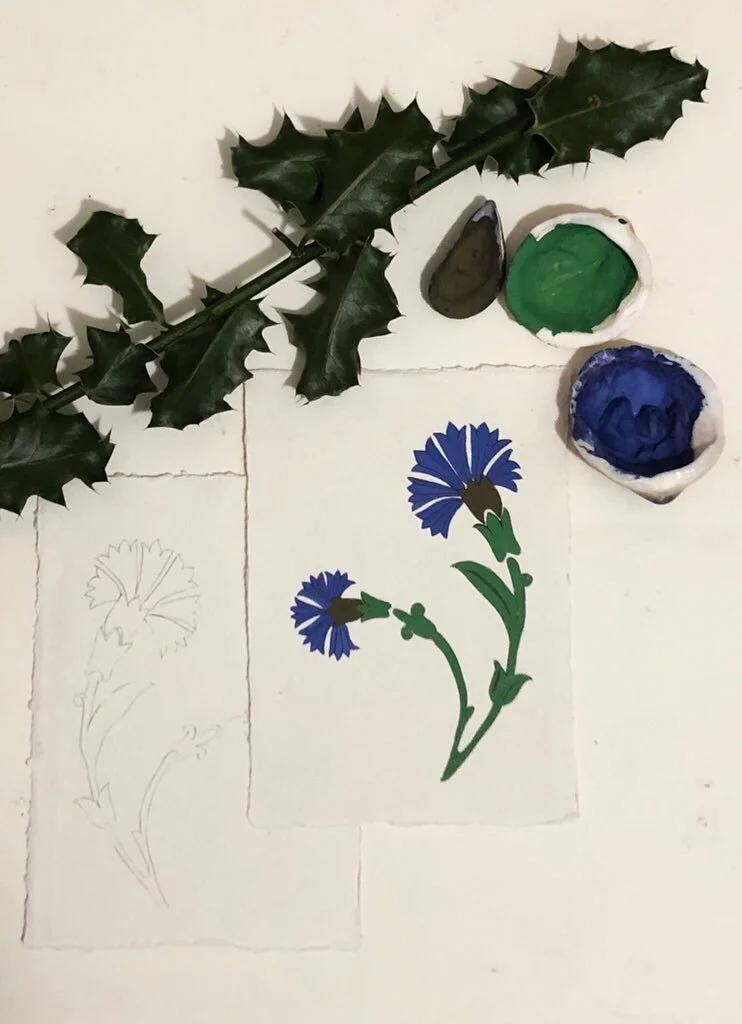Turkish Ottoman Floral Motifs
The floral patterns found in Islamic manuscripts and arts are very rich and I prefer the use of the term “biomorphic” in English instead of Arabesque to describe them. These motifs come from the Ottomans, Safavids and Mughal Islamic periods. None of them are Arab and their style should not be referred to as “Arab Style” because that ignores their own heritage and beautiful contributions.
Islamic biomorphic patterns are heavily inspired from nature and that inspiration forms a visual language of motifs. In the Turkish Ottoman period (14th century until the 19th century), the floral style is distinct. These florals and other biomorphic motifs appear in manuscripts, armoire, textile and tiles.
This Ottoman/Turkish floral system is referred to as Hatâyî and it is also known as Khatei ختايى in Farsi. This name is a reference to China because it used to be called Cathay and it’s believed they are one of the main influencers of floral motifs. The correct name reveals such an interesting development of history.
In Arabic, the term is Nabati نباتي or Tawriq توريق, which means from plants, leafy or vegetal.
The basics of these motifs are similar and this subject has been part of my PhD study. In December 2019, I returned back to these motifs to explore them further and just to practice a little bit more painting with them. This post will introduce you to these basics that I learnt through practice and through the very informative book: Motifs In Turkish Decorative Arts book by Dr. Inci Birol and Prof Dr. Derman.
Yaprak
Depicting form nature in the stylised way occurred in the time of the Ottomans and was perfected in the 16th century. The leaf in Turkish is called “Yaprak” and it is the starting point of most designs inspired from nature. The use of the leaves is so versatile in design sometimes it is a plain leaf other times it is a large and toothed one. There was a lot of play in segmenting and curling the leaves as well.
Penç
Flowers found in Ottoman manuscripts are from the bird’s eye view and it is about what the bird notices first, which is the colours and the patterns of the flowers. The petals numbers is what gives the flower its art reference/name. The five petal flower was very popular and the number five in Farsi is Penç so most flowers are referred to as that even if they are not 5, which might sound miss leading when it describes other flowers that are less or more than five petals.
Each flower follows a basic geometric and symmetrical division as well.
Stylised flowers
Most of this floral system known as Hatayi is made of stylised forms of the leaves, flowers and what appears in the botanical world. The fully stylised flower is also referred to as Hatayi too. Those flowers are also from a bird’s eye view. The parts shown in the stylised flower follow the natural order of flowers and include the stem, sepal, pollen and petals. This finding was highlighted by Professor Muhsin Demironat. Those types of flowers are also symmetrical. The line of symmetry sections the flower into two sections.
Semi-Stylised flowers
Semi stylised flowers were created by head artist Kara Memi during the Ottoman ruler Suleiman the Magnificent in the 16th century. Although it’s a little stylised, the flowers retain characteristics from the natural form.
These types of flowers are most commonly used on tiles and it mainly features tulips, roses and carnations (like the one in the photo).
These flowers are usually painted in bright red like the ones you would see in Ottoman mosques.
The information I am using for this post comes from, which you can find in English and Turkish:
Information & motifs from: Motifs In Turkish Decorative Arts book by Dr. Inci Birol and Prof Dr. Derman
All art photos shown in this post are by me and were first shared on instagram.
Art information:
Cotton Paper from @khadipapers
Paint is handmade watercolour using pigment from @l.cornelissen_and_son & @joumajnouna
Brush: size 0 from @cassart1984 & cloud from @vaishaliprazmari









